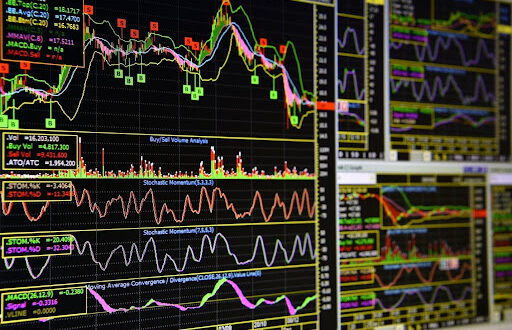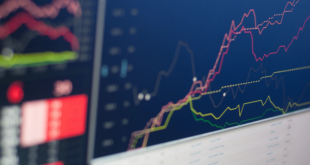Forex traders use both technical and fundamental analysis to make better decisions when entering and exiting the market to buy and sell foreign currencies. While some traders may frame their strategies around one particular analysis, both should ideally be used to inform trades. As one expert puts it, “good technical analysis will tell you ‘when’, good fundamental analysis will tell you ‘why’”.
What is fundamental analysis?
Fundamental analysis is centered around various types of economic data. Traders will assess a particular country’s currency based on its current rate of inflation, gross domestic product (GDP), ability to create jobs, and the central bank’s interest rate, among other factors. All of these factors, when weighed against each other, help traders to measure the inherent value of a currency, and its overall strength rather than its price movements, which is the domain of technical analysis.
One tool that traders rely on for fundamental analysis is a live economic calendar which lists the dates and times for all the important economic events and indicators globally on a day-by-day basis. These events will help you to understand whether a currency is currently showing any signs of strength or weakness. You can use this knowledge to make trades. If, for example, US economic data is strong, the US dollar is likely to strengthen against GBP or EUR as investors look to buy into it.
Using the economic calendar is part of a ‘news trading’ strategy where you open and close positions depending on the latest employment figures, Consumer Price Index (CPI) reports, and rates of economic growth. ‘Good’ and ‘bad’ news can help to determine a currency’s outlook, which will affect its supply and demand.
Basically, fundamental analysis aims to determine the intrinsic value of a currency and extrapolate a target price. Traders always expect value to be borne out by price in the long term, but aim to profit by buying and selling currency pairs when an asset is still undervalued or overvalued.
What is technical analysis?
Technical analysis is perhaps, unsurprisingly, more technical, with a focus on reading graphs, charts and indicators, and identifying patterns which help to determine whether the price of a currency will go up or down. A few of the most popular indicators include the Moving Average (MA), Relative Strength Index (RSI) and Bollinger Bands. Traders pore over minute movements in currency prices and attempt to identify patterns, flags and “double patterns” to determine entry and exit points.
Technical traders are not trying to understand why something is happening – that is where fundamental analysis comes in, they are just attempting to understand when something will happen. That’s why it is important to mix and match both styles of trading for a more transparent and relevant view of the market, which will help you to make better trades.
Diving deeper into technical analysis, traders will have to learn how to read charts and act on them to execute strategies effectively. While this can be challenging to begin with, educational resources offered by forex brokers can help. Before signing up with a broker, it is always preferable to check that its trading platform, spreads, leverage and educational tools meet your requirements. Reading a review of brokers and then selecting the right one will enable you to undertake technical analysis with the peace of mind that your account and deposits are safe and secure.
Traders rely on technical analysis due to three basic tenets or assumptions – that studying an asset is enough to fully understand what is happening in the market, that prices move up and down in trends, and that this will continue to be true in the future. Technical traders know that history always repeats itself and they look to past patterns and current movements to make better decisions.
Trends are central to technical analysis as traders would only enter or exit the market if they believe a currency’s next price movement would follow the trend that has just been identified. This is what usually happens. You can use tools, charts and indicators to find these trends, which are categorized as “upward”, “downward” and “sideways” trends.
To conclude, fundamental analysis uses economic data to define a currency’s value and target price, while technical analysis identifies trends and predicts the movement of a currency’s price through chart and indicator patterns. While there is debate about which is “better”, both should be used as part of an effective forex trading strategy.
 HammBurg Be informed with latest news, reviews, entertainment, lifestyle tips, and much more.
HammBurg Be informed with latest news, reviews, entertainment, lifestyle tips, and much more.




